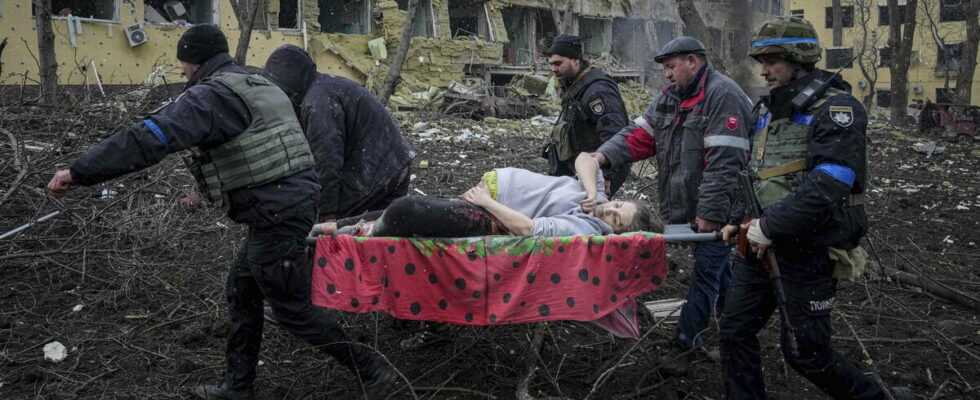Due to its strategic position, the Ukrainian city represents an important target for the armies of the Kremlin. Crushed by bombs and cut off from the rest of the world, it has become one of the symbols of this invasion.
After Aleppo and Grozny, Mariupol could join the sad list of cities razed by the Russian army. The metropolis in southeastern Ukraine, where Moscow announced a truce on Thursday to allow the evacuation of civilians, has been surrounded and shelled for a month by Vladimir Putin’s troops.
About 160,000 inhabitants are said to be stuck in this port city on the Sea of Azov, cut off from the world and deprived of water, food, electricity and heating. A blockade denounced as a “genocide” by the Ukrainian authorities and “major war crime” by the European Union.
The encirclement
On March 2, a week after the start of its offensive in Ukraine, Russian artillery pounded the Russian-speaking city of 441,000 inhabitants, located about fifty kilometers from the Russian border and 85 kilometers from the separatist stronghold of Donetsk.
Mayor of Mariupol accuses Russian and pro-Russian forces of seeking “to impose a blockade” by preventing the town’s supply and cutting off its “vital infrastructure”: water, electricity and heating.
The capture of the city would allow Russia to ensure the junction between its forces coming from annexed Crimea, which have already taken the key ports of Berdiansk and Kherson, and the separatist and Russian troops from Donbass further north.
The bombardment of maternity
On March 9, a Russian strike targets a maternity and pediatric hospital. The place was devastated by the violence of the explosion, which killed three people, including a young girl.
Ukraine and the EU condemn a “war crime”Russia claiming that the building housed Ukrainian ultranationalist fighters.
The first evacuations
In mid-March, thousands of civilians began to be evacuated from Mariupol, after the difficult establishment of a humanitarian corridor.
Previous evacuation attempts had so far failed, with both sides blaming each other for it.
The destruction of the theater
On March 16, a theater in which nearly a thousand people had taken refuge was destroyed by Russian aircraft, according to the Ukrainian authorities who later indicated that they feared the death of around 300 people.
Moscow denies this bombing, attributing it to the Ukrainian nationalist Azov battalion.
The refusal to capitulate
On March 21, Kyiv rejects an ultimatum to capitulate issued by Russia. Ukraine does not “will not lay down their arms and will not leave the city” declares its Deputy Prime Minister, while, for a few days, the Russian army has been saying that it is tightening its grip and fighting the “nationalists”in the center of town.
Civilians who managed to leave Mariupol in their own vehicles and at great risk describe dire conditions, with civilians holed up in basements and corpses strewn in the streets that no one bury due to the incessant shelling.
Here is the map of the damage estimate as of March 24 made by Releasewhich shows the extent of the destruction in the city:
Hope for a humanitarian truce
On March 30, Moscow announced a “silent regime”i.e. a local ceasefire, starting at 10 a.m. the following day in order to open a humanitarian corridor “with the direct participation of representatives of the United Nations High Commissioner for Refugees and the International Committee of the Red Cross”. This Thursday, the humanitarian organization specifies however that it is ready to direct the evacuation from Friday, and provided that it has the necessary guarantees.
In the morning, Kyiv sent 45 buses to Mariupol to evacuate civilians, but no information is yet available on the progress of operations.
